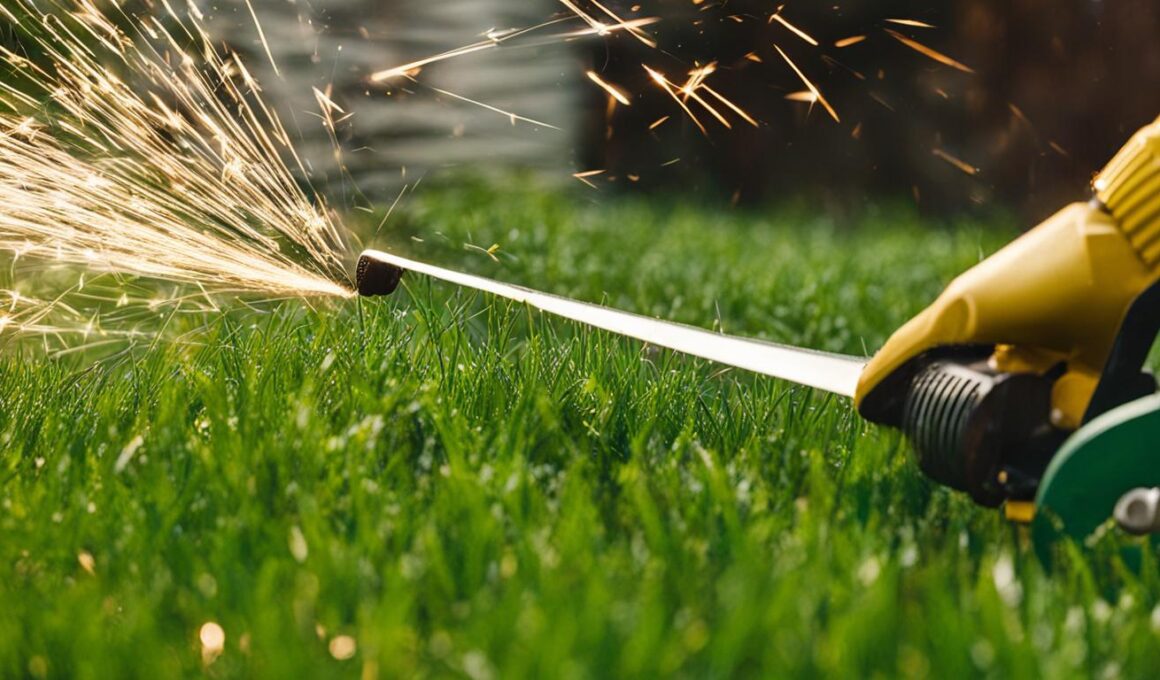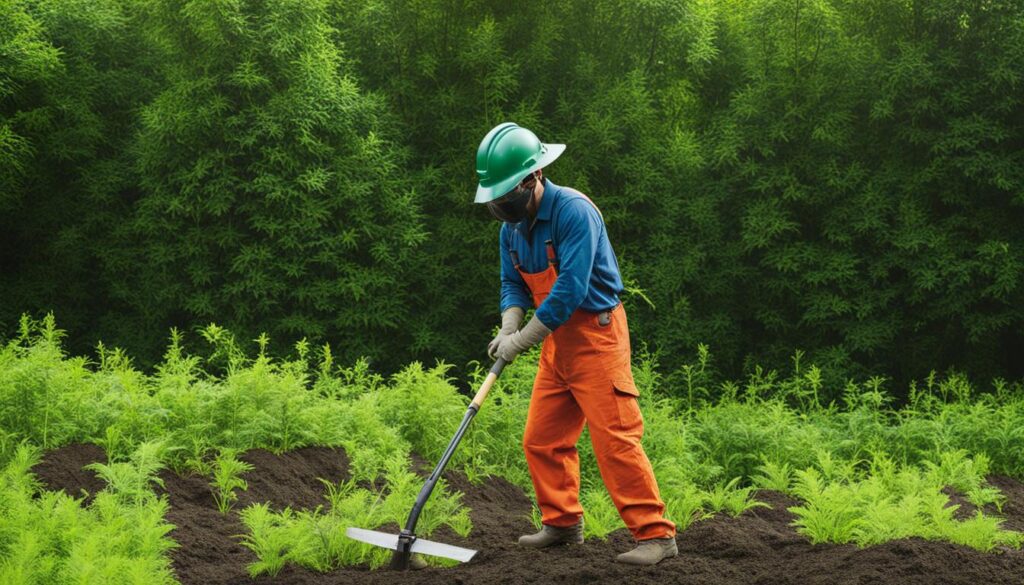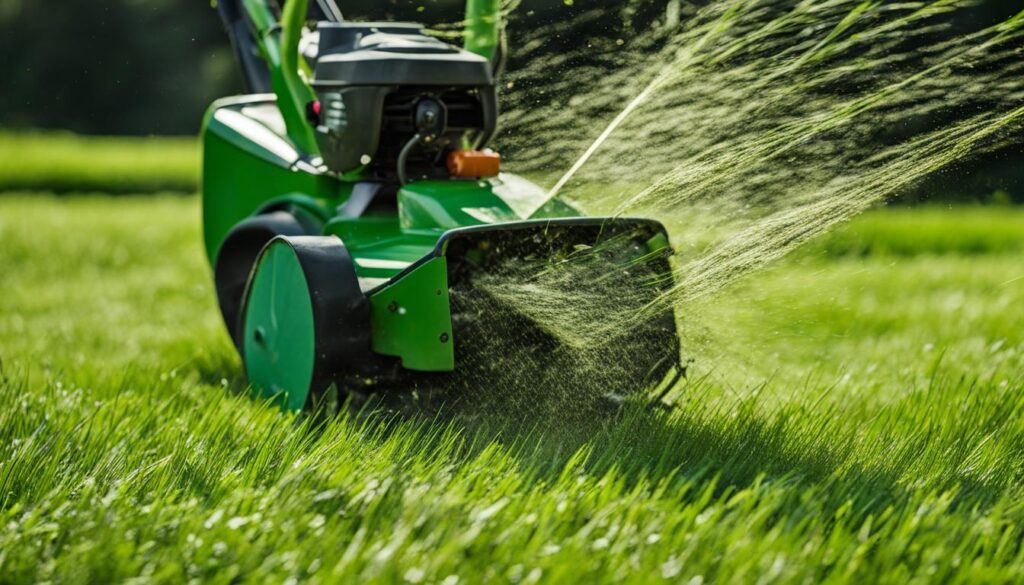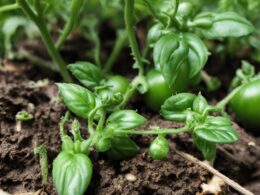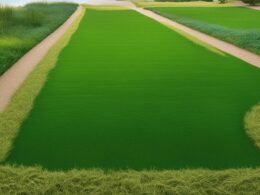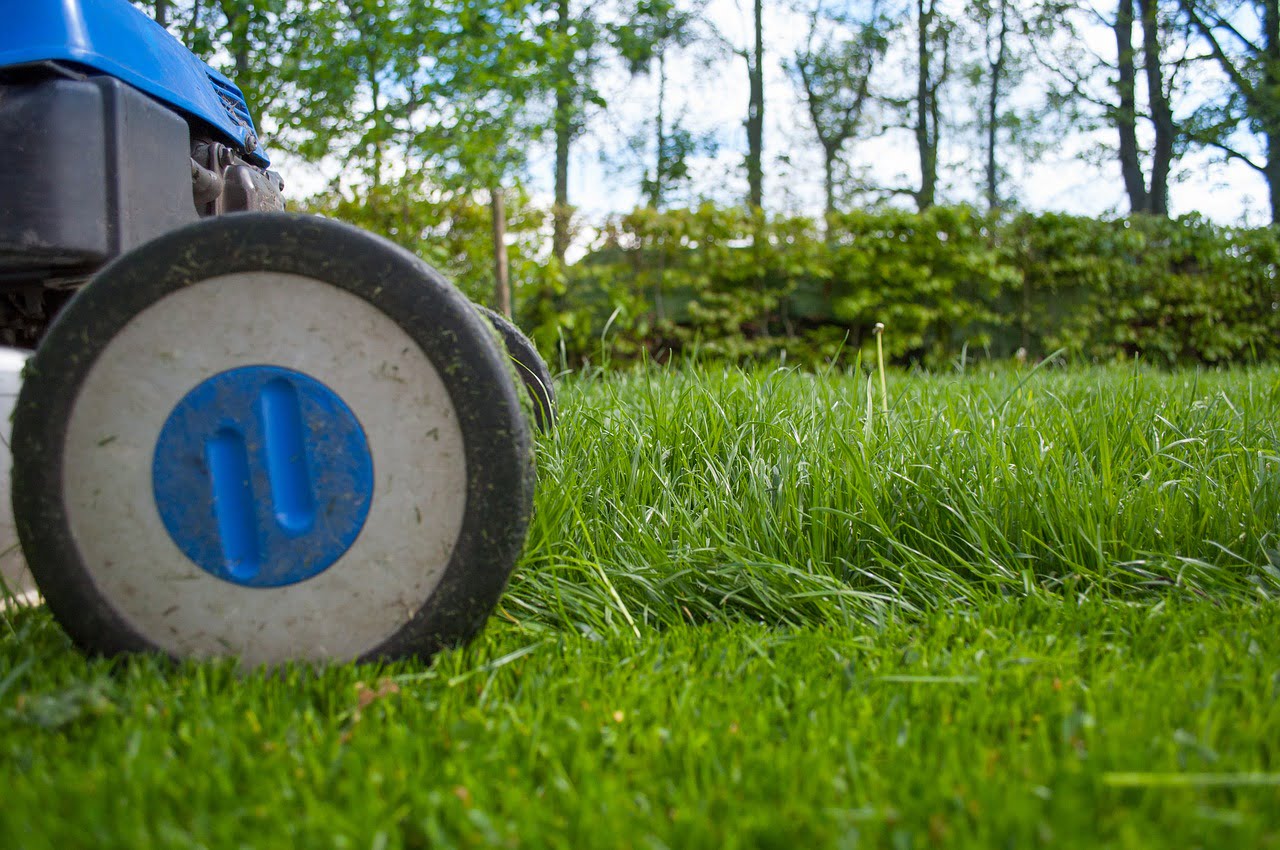Welcome to our comprehensive guide on weed-eating, where we will share valuable tips and techniques to help you achieve professional-looking results. Whether you’re a seasoned gardener or a beginner, this guide will walk you through the entire process, from selecting the right equipment to mastering essential trimming techniques. So, let’s dive in and transform your lawn into a picturesque oasis!
In this section, we will cover the fundamentals of weed eating, starting with choosing the right equipment for the job. We will explore the differences between gas and electric trimmers, as well as straight shaft and curved shaft trimmers. By understanding the pros and cons of each type, you’ll be able to make an informed decision that suits your specific needs.
Once you have the right equipment, it’s important to prepare for weed eating by gearing up and taking safety precautions. We’ll guide you through selecting the proper safety gear, including protective clothing, safety glasses or a face shield, gloves, and more. Safety should always be the top priority when working with weed eaters.
With the right equipment and safety gear in place, we’ll move on to teach you the essential techniques for achieving a professional finish. From starting a gas weed eater to maneuvering around trees and flower beds, we’ll provide step-by-step instructions that will elevate your trimming skills.
After completing the weed eating process, we’ll show you how to give your lawn a polished look by cleaning up properly. We’ll discuss effective ways to blow grass clippings into the lawn and introduce you to some additional uses of weed eaters that you may not be aware of.
In the final sections, we’ll share tips for maintaining a pristine lawn and tackle some frequently asked questions to ensure you have a comprehensive understanding of weed eating and lawn care. By the end of this guide, you’ll be equipped with the knowledge and techniques to achieve a professional and manicured lawn that will impress your neighbors and guests.
So, let’s get started on this weed-eating adventure, and before you know it, you’ll be trimming like a pro!
Choosing the Right Equipment for Weed Eating
When it comes to weed eating, having the right equipment is crucial. To effectively trim your lawn, you need to choose the right string trimmer for the job. There are different types of string trimmers available, each with its own advantages and considerations.
If you’re deciding between gas and electric trimmers, it’s important to consider your specific needs. Gas trimmers are typically more powerful, making them suitable for larger yards or heavy-duty tasks. They offer the convenience of cordless operation but require regular maintenance and can be louder and heavier.
On the other hand, electric trimmers, whether corded or cordless, provide a quieter and lighter option. They are generally easier to start and maintain, making them ideal for smaller yards or regular maintenance. However, corded electric trimmers have limited mobility due to the cord length, while cordless trimmers have a runtime limitation.
Furthermore, you’ll need to decide between a straight shaft or a curved shaft trimmer. Straight shaft trimmers offer better reach and maneuverability, making them suitable for tall or overgrown grass. They also provide better weight distribution, reducing fatigue during prolonged use.
Curved shaft trimmers, on the other hand, are typically lighter and easier to control, making them suitable for smaller yards or more delicate areas. They are often more comfortable to use for shorter individuals or those with limited upper body strength.
Ultimately, the best choice for you will depend on your specific lawn size, terrain, and personal preferences. Consider the size of your yard, the tasks you plan to tackle, and your comfort level when operating different trimmers. Choosing the right equipment will ensure that you can efficiently and effectively maintain your lawn.
Preparing for Weed Eating: Gear Up and Safety Precautions
Before you begin weed eating, it’s crucial to prioritize your safety by gearing up and taking the necessary precautions. By wearing the right protective clothing and using the appropriate weed eating safety gear, you can ensure a safe and productive experience.
When it comes to protective clothing, make sure to wear long sleeves and pants to shield your arms and legs from any potential debris or flying objects. Additionally, gloves will provide added protection for your hands and help improve grip and control.
Protecting your eyes is equally important, so be sure to wear safety glasses or a face shield to safeguard yourself from any debris, dust, or small particles that may be thrown up during the weed eating process. Don’t forget to wear closed-toe shoes to protect your feet from accidental injuries or slips.
To safeguard your hearing from the noise generated by the weed eater, it’s essential to wear ear protection. This could be in the form of earplugs or earmuffs, whichever you find most comfortable.
Equipping yourself with the right gear is vital for professional results. When it comes to selecting a weed eater, you’ll need to choose between a straight shaft and a curved shaft trimmer. Straight shaft trimmers offer better reach and flexibility, making it easier to trim hard-to-reach areas, while curved shaft trimmers are more lightweight and easier to maneuver.
Ultimately, it’s important to gear up for professional results by wearing the appropriate protective clothing and using the right weed eating safety gear. By following these safety precautions and using the proper equipment, you can ensure both your safety and the quality of your weed eating work.
Weed Eating Techniques for a Professional Finish
When it comes to achieving a pristine lawn, mastering the right weed eating techniques is essential. In this section, we will guide you through the steps to ensure a professional finish. Whether you’re starting a gas weed eater or tidying up around trees and flower beds, we’ve got you covered. Let’s dive in!
How to Start a Gas Weed Eater
To begin using a gas-powered weed eater, it’s important to follow the correct startup procedure.
- First, check that you have enough fuel in the tank and that the fuel mixture is correct according to the manufacturer’s instructions.
- Next, prime the engine by pressing the primer bulb an appropriate number of times as indicated in the user manual.
- Then, set the choke to the starting position, typically labeled as “cold start.”
- Pull the starter cord firmly and swiftly to start the engine. Once it starts, move the choke to the open position.
Remember to refer to the specific instructions provided by the manufacturer for your gas weed eater model, as startup procedures may vary.
Weed Eating Around Trees and Flower Beds
When weed eating around trees and flower beds, it’s important to exercise caution and precision to avoid damaging the vegetation.
- Start by clearing any debris or loose soil around the base of the tree or flower bed.
- Hold the weed eater at an angle, positioning the cutting head just above the ground.
- Move the tool in a slow and controlled motion, following the edge of the planting area.
- Avoid getting too close to the tree trunk or flower stems to prevent accidental damage.
By taking these steps, you can maintain a neat and tidy appearance while preserving the health of your trees and flowers.
Weed Eating on Paved Surfaces
Weed eating on paved surfaces, such as driveways and sidewalks, requires a slightly different approach to ensure a clean finish.
- Adjust the cutting head so that it is parallel to the ground.
- Hold the weed eater steady and run it along the edges of the paved surface to remove any grass or weeds that may have encroached.
- Take your time and pay attention to detail, as a meticulous approach will yield the best results.
Remember to exercise caution to avoid damaging the pavement or any surrounding structures while weed eating on paved surfaces.
Now that you’re equipped with these weed eating techniques, you can confidently achieve a professional finish on your lawn. Keep practicing and refining your skills, and soon you’ll be able to create a manicured landscape that will impress everyone who sees it.
Cleaning Up: Professional Finish and Additional Uses of Weed Eaters
After you have completed the weed eating process, it’s time to give your lawn a professional finish. Cleaning up is an essential step to ensure that your hard work pays off. In this section, we will discuss effective techniques for cleaning up and provide insights into the additional uses of weed eaters beyond trimming.
Blowing Grass Clippings for a Clean and Polished Look
To achieve a pristine appearance, it is important to remove grass clippings from your lawn after weed eating. One effective method is to use a leaf blower or a weed eater with a blowing function to blow the clippings back into the grass. This technique not only tidies up your lawn but also helps distribute the nutrients from the clippings back into the soil, promoting healthy growth.
By blowing the grass clippings, you will achieve a clean and polished look, giving your lawn a professionally maintained appearance. Make sure to blow the clippings in the direction you want them to go, ensuring they are evenly dispersed across the lawn.
Additional Uses of Weed Eaters
Did you know that weed eaters can be used for more than just trimming? These versatile machines have additional applications that can make your outdoor tasks easier. Here are a few alternative uses:
- Cutting tall grass: Before mowing your lawn, use a weed eater to trim down tall grass. This will prevent the mower from bogging down and ensure a more even cut.
- Clearing overgrown areas: Weed eaters are perfect for tackling overgrown areas that may be difficult to reach with a lawnmower. Use the weed eater to trim down tall weeds and grass to regain control over your yard.
- Creating clean edges: Use a weed eater to create clean and defined edges along sidewalks, driveways, and flower beds. This will give your landscape a well-manicured appearance.
- Removing weeds between pavers: Weed eaters can also be effective for removing weeds that grow in the cracks between pavers or in other hard-to-reach areas. Simply guide the weed eater along the surface to cut away the weeds.
With these additional uses, your weed eater becomes a multi-purpose tool that can assist you in various outdoor tasks, saving you time and effort.
Tips for a Pristine Lawn and Frequently Asked Questions
To achieve a pristine lawn that exudes a professional look, it’s important to prioritize lawn health and maintenance. Follow these tips to ensure your lawn remains lush, vibrant, and envy-worthy.
Mowing:
Regular mowing is key to maintaining a pristine lawn. Set your mower blades to the appropriate height for your grass type and avoid cutting more than one-third of the grass blade length at a time. This will promote healthy growth and prevent scalping.
Watering:
Proper watering is essential for a lush and vibrant lawn. Water deeply but infrequently to encourage strong root growth. Aim for about one inch of water per week, including rainfall. Watering early in the morning allows the grass to dry before evening, reducing the risk of diseases.
Fertilizing:
Regularly fertilizing your lawn provides essential nutrients for its health and appearance. Choose a high-quality fertilizer specifically formulated for your grass type and apply it according to the recommended schedule. Be careful not to over-fertilize, as this can lead to excessive growth and weak root development.
Aerating:
Aerating your lawn helps alleviate soil compaction and allows air, water, and nutrients to penetrate the root zone, promoting healthy growth. Use a core aerator to remove small plugs of soil and perform this task during the growing season when the grass can recover quickly.
Overseeding:
Overseeding is the process of spreading grass seed over an existing lawn to fill in thin or bare areas. It helps improve density and enhances the overall appearance of the lawn. Choose a high-quality grass seed blend that suits your climate and grass type, and follow the recommended seeding rate.
Now, let’s address some frequently asked questions about weed eaters and lawn care:
Q: How often should I use a weed eater on my lawn?
A: The frequency of weed eating depends on your lawn’s needs. Generally, weed eating is done alongside regular mowing, so aim to trim any areas that the mower can’t reach or areas that require a more precise cut.
Q: Can a weed eater damage my lawn?
A: When used correctly, a weed eater should not damage your lawn. However, it’s important to exercise caution around delicate areas such as tree trunks and flower beds. Use a steady and controlled motion to avoid accidentally cutting into the grass, and consider using a trimmer guard to protect nearby surfaces.
Q: Is it necessary to wear protective gear when using a weed eater?
A: Yes, wearing the appropriate protective gear is crucial for your safety. Always wear long sleeves, pants, gloves, safety glasses or a face shield, closed-toe shoes, and ear protection to minimize the risk of injuries from flying debris and excessive noise.
Q: Can I use a weed eater to trim edges along paved surfaces?
A: Yes, a weed eater can be used to trim edges along paved surfaces, such as driveways and sidewalks. However, you may need to adjust the trimming technique and use caution to avoid damaging the surface or throwing debris onto it. Consider using a trimmer with a dedicated edging function for more precise results.
What Are Some Tips and Techniques for Efficiently Using a Weed Eater?
When using a weed eater efficiently, be sure to maintain a steady pace and angle the tool slightly to the side for the best results. Use the appropriate trimmer line for the job and wear protective gear to ensure safety. Regular maintenance of the weed eater is also crucial for efficient use.
Conclusion
In conclusion, weed eating is an essential task for maintaining a well-kept lawn. By following the tips and techniques outlined in this guide, you can achieve professional-level results and make your lawn stand out from the rest.
To start, it is crucial to choose the right equipment for weed eating. Consider whether a gas or electric trimmer would be more suitable for your needs, and decide between a straight shaft or curved shaft trimmer. These decisions will impact the efficiency and ease of your weed eating process.
Additionally, don’t forget to prioritize safety. Wear the appropriate safety gear such as long sleeves, pants, gloves, safety glasses or a face shield, closed-toe shoes, and ear protection. This will ensure that you can easily maneuver your trimmer while protecting yourself from any potential hazards.
Finally, practice the proper weed eating techniques to achieve a pristine and manicured lawn. Learn how to start a gas weed eater, master the art of weed eating around trees and flower beds, and effectively edge between the grass and paved surfaces. These techniques will give your lawn a professional finish.





